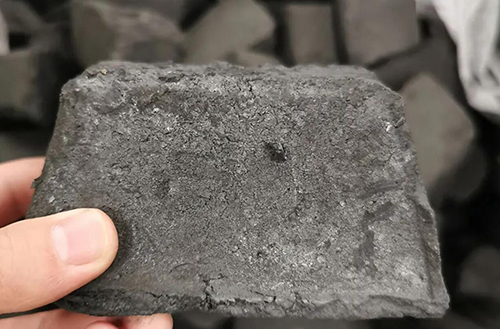How do you make carbon electrode paste?
Carbon electrode paste is a vital component in various industrial processes, playing a crucial role in the production of metals and alloys through electric arc furnaces.
Before we delve into the production process, let’s familiarize ourselves with the core ingredients that constitute carbon electrode paste:
Petroleum Coke: Sourced from heavy residues of crude oil distillation, petroleum coke provides the necessary carbon content essential for electrical conductivity.
Coal Tar Pitch: A viscous black liquid derived from coal tar distillation, coal tar pitch acts as the binder, ensuring the cohesion of the paste components.
Calcined Anthracite: This high-purity carbon material, obtained through heat treatment of anthracite coal, enhances the paste’s conductivity and mechanical properties.
Additives: Various proprietary additives are introduced to optimize the paste’s characteristics, such as its thermal resistance, mechanical strength, and performance under extreme conditions.
The Manufacturing Process
Creating carbon electrode paste is a meticulous process that demands precision and adherence to quality standards. Here’s a step-by-step breakdown:
Batch Preparation: Accurate measurements of petroleum coke, coal tar pitch, and calcined anthracite are taken according to the desired paste composition.
Mixing: The ingredients are thoroughly mixed in a controlled environment to ensure uniform distribution and consistency.
Heating and Blending: The mixture is heated under controlled conditions to melt the coal tar pitch, which binds the carbon particles together. Intensive blending ensures a homogeneous paste.
Additive Incorporation: Specialized additives are introduced during mixing to impart specific properties to the paste, such as improved oxidation resistance or increased thermal conductivity.
Cooling and Solidification: The blended paste is allowed to cool, solidify, and take shape. This step is crucial to establish the paste’s structural integrity.
Quality Control: Rigorous testing is performed to assess the paste’s electrical conductivity, mechanical strength, and other performance metrics. Adjustments are made if necessary.
Packaging: The finalized carbon electrode paste is packaged in a suitable form for storage and transportation to the end users, such as steel mills or foundries.

Ensuring Quality and Performance
The production of carbon electrode paste requires adherence to strict quality control measures to ensure optimal performance in industrial applications. Manufacturers employ advanced techniques to analyze the paste’s properties, including:
X-ray Diffraction (XRD): This technique helps identify the crystalline structures present in the paste, aiding in assessing its thermal stability.
Thermogravimetric Analysis (TGA): TGA provides insights into the paste’s thermal behavior, helping to determine its performance at high temperatures.
Electrical Conductivity Testing: Conductivity measurements verify the paste’s ability to conduct electric current efficiently.





